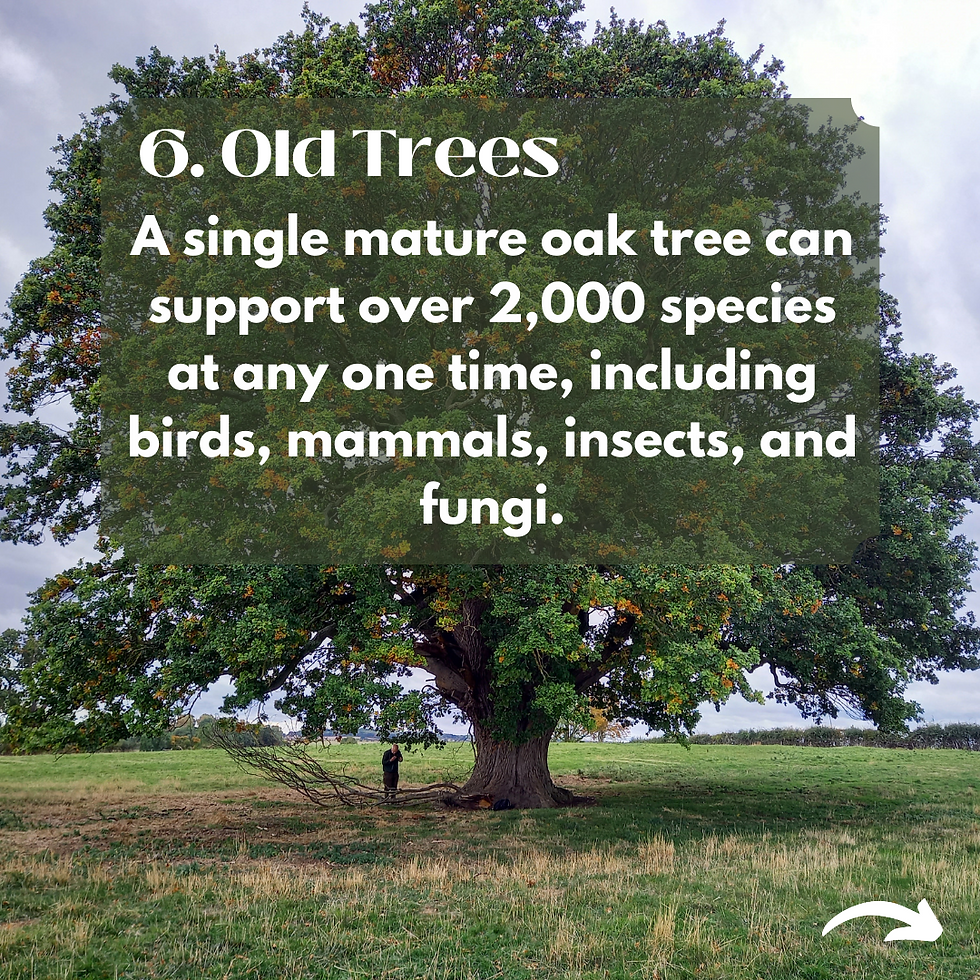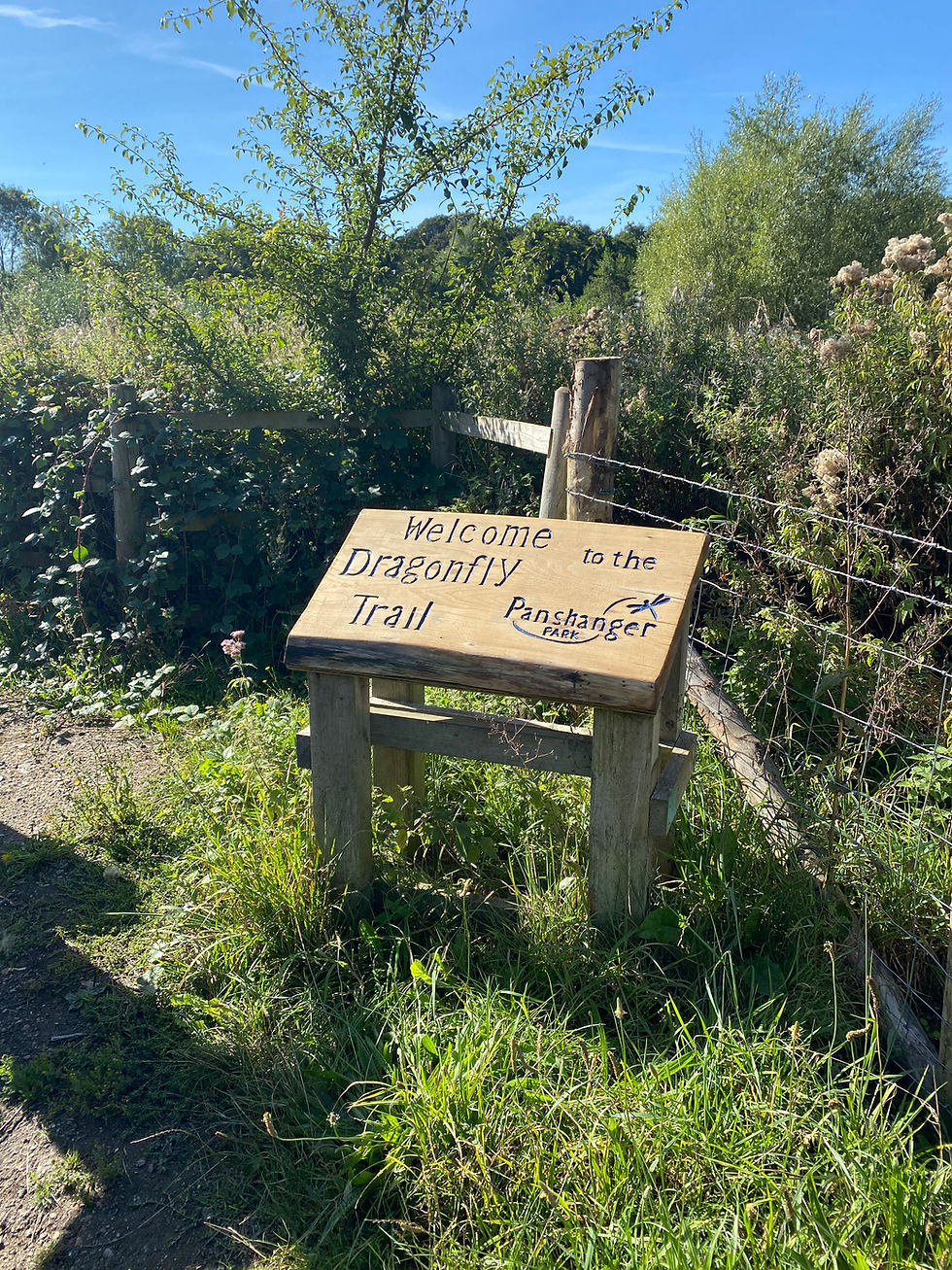10 things to do on the farm in 2023
- Alice Clark

- Jan 11, 2023
- 4 min read

The beginning of a new year always gets everyone looking ahead to what the future holds and to consider making new year's resolutions. In 2023, why not make it a resolution to consider your farm environment and what little things you can do to make big changes for the future?

1. Let them grow! Hedgerows are incredibly important habitats within our farmed landscape, both as habitats in their own right and as ‘corridors’ to connect habitats within the wider landscape. Increasing hedgerow habitat can involve planting new hedgerows, gapping up existing hedgerows, or just simply allowing your current hedgerows to grow. As many of us are moving towards longer cutting rotations, or bringing back long-term coppicing and laying rotations, where possible, if you haven’t made the change, maybe now is the time to give it a try? If long rotations seem a bit daunting, why not allow some of your annually cut hedges to grow and aim for a few larger, 2m bushy hedges.

2. Wildflowers. If you have not already done so, why not try establishing wildflower plots or margins. Wildflower plots provide a fantastic habitat for your farm’s pollinators, can assist in integrated farm management, and add a nice pop of colour, amongst many other benefits. Wildflower margins are also a popular option to be funded within countryside stewardship.

3. Farmland birds. There are many different ways you can help the birds on your farm. If you are considering stewardship, you can get funding for both winter bird food plots and supplementary feeding for over winter. If you don’t have much land to work with, why not try putting up some bird boxes? You could also take part in the Big Farmland Bird Count in February to get a better idea as to what birds are present on the farm.

4. Dig a pond! It is estimated that the UK has lost around 50% of ponds in the 20th Century alone. Ponds provide a valuable habitat, acting as a home to many different species, including the protected great crested newt, as well as acting as a water source to many more. Ponds can also act as natural flood management on the farm and are a perfect way to tackle wet corners in fields. See our funded pond project to find out if we can help you fund your pond works.

5. Field corners. Although undervalued in more recent schemes, they are still vitally important areas, providing a wonderful habitat for your farm wildlife. A favourite spot of the local barn owls, and a great way to cut out any awkward corners from your field while requiring very little management. Why not consider leaving a grassy field corner this new year?

6. Old trees! Many farms are a haven for veteran and ancient trees tucked away in small meadows or along hedgerows and old farm tracks. A single mature oak tree can support over 2,000 species at any one time, including birds, mammals, insects, and fungi. These old trees also make for marvellous sources of local saplings and seeds to propagate new trees. Maybe now is the time for a tree survey to tag and protect your veteran and ancient trees.

7. New trees! If your farm is slightly lacking in trees, this could be the year to consider some tree planting. Woodlands in particular have been shown to increase biodiversity, capture carbon, reduce the risk of flooding, and even lower your blood pressure! You could start simple by planting a small new woodland, allowing your hedgerow trees to grow, or go big and fully integrate them into your farming operations. Now is an exciting time to begin experimenting to see what works for your farm.

8. Standing and fallen deadwood. A hugely underrated habitat which is very easy to create and maintain. In 2023, perhaps consider leaving deadwood out and about on the farm where possible. We know it’s hard to fight the urge to tidy the place up, but even small piles of deadwood can provide a valuable habitat to a wide range of species, including invertebrates, reptiles, amphibian, and small mammals. They are even used as nurseries by the stag beetle.

9. Soil Glorious Soil. Soil is every farm’s greatest natural resource, and there are several easy tests which can help you get a better understanding of the soil on your farm. All you need is a spade, and you are halfway there. Why not try a worm count or an infiltration test this year?

10. Health. Finally, make sure to take some time for yourself and to spend time with your family. There is no shame in asking for help, whether that help is with paperwork, planning, or even just a chat to get some of your worries off your chest.
Not everything will work for everyone, and we encourage you to also come up with your own ideas. Please feel free to share any of your own innovative ideas on our socials, we would love to hear what you come up with.
Whatever it is you decide to do, we are only a phone call or an email away and can offer advice both on the practical aspects and potential funding available. Find out more about how we can help and what we offer at:




Comments